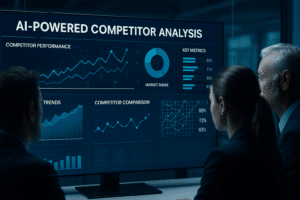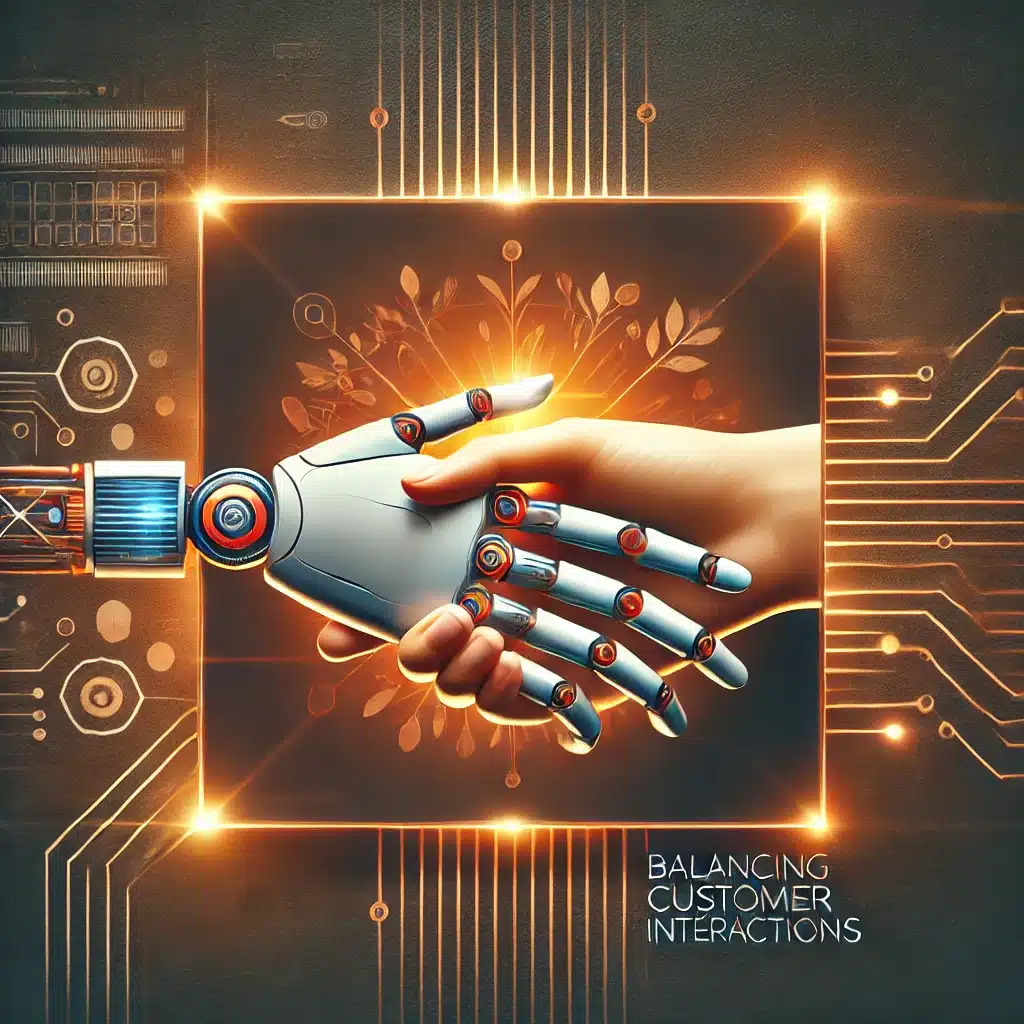In today’s fast-paced business environment, staying ahead of the competition is crucial for success. Leveraging artificial intelligence (AI) for competitor analysis has emerged as a powerful strategy to enhance competitive intelligence, allowing businesses to gain valuable insights into their competitors’ strengths and weaknesses. This article explores how AI can be utilized for competitor analysis, the benefits it offers, and how it can be integrated into your sales strategy to maintain a competitive edge.
What is AI-Powered Competitor Analysis?
Understanding the Basics of Competitor Analysis
Competitor analysis is a vital component of any business strategy. It involves researching and evaluating the strengths and weaknesses of competing firms within the same market. By conducting a thorough competitor analysis, businesses can identify their competitors’ strategies, market positioning, and overall performance. This foundational research helps organizations make informed decisions about their own strategies and offerings. However, traditional methods of competitor analysis can be time-consuming and may not provide the depth of insight required to make strategic decisions. This is where AI-powered tools come into play, transforming the landscape of competitive research.

How AI Enhances Competitive Intelligence
AI enhances competitive intelligence by automating the data collection and analysis process. Powerful AI algorithms can analyze vast amounts of data from multiple sources, including social media, customer feedback, news articles, and industry reports. By using AI for competitive analysis, businesses can uncover trends and patterns that would be difficult to identify manually. These AI-powered tools leverage machine learning and natural language processing to provide real-time analytics, thus allowing businesses to stay updated on their competitors’ movements. Ultimately, this leads to a more informed approach to sales enablement and strategy development.
Key Benefits of Using AI in Competitive Analysis
Integrating AI into your competitive analysis offers numerous benefits. First, it streamlines the data collection process, allowing businesses to access a wealth of information quickly and efficiently. Second, AI-powered insights are often more accurate and timely, enabling organizations to react promptly to changes in the competitive landscape. Third, AI can help identify customer sentiment related to competitors, providing valuable insights into how a company is perceived in the market. By leveraging AI for competitive analysis, businesses gain a significant competitive advantage, positioning themselves effectively in a crowded marketplace.
How Can I Use AI Tools for Competitive Analysis?
Identifying the Top AI-Powered Tools for Competitor Analysis
There is a wide array of AI tools available for competitor analysis, each offering unique features and capabilities. Some of the top AI-powered tools include media monitoring tools that track mentions of competitors across various platforms, sentiment analysis tools that gauge customer feedback, and analytics platforms that visualize competitive data. Tools like ChatGPT can be employed to generate insights based on customer interactions, enabling businesses to understand consumer preferences better. By identifying and utilizing the right AI tools, organizations can enhance their competitive intelligence efforts and refine their strategies accordingly.
Use Cases of AI in Competitive Intelligence
The use cases of AI in competitive intelligence are extensive. For instance, businesses can employ AI to monitor real-time competitor activity, such as product launches, marketing campaigns, and pricing changes. Additionally, sentiment analysis can be used to assess how customers perceive competitors, offering insights into potential areas for differentiation. AI can also aid in analyzing market trends to anticipate shifts in consumer behavior and preferences. By implementing these use cases effectively, organizations can build a robust competitive analysis framework that adapts to market changes.
Integrating AI Tools into Your Sales Strategy
To fully leverage AI tools in competitive analysis, organizations must integrate them into their overall sales strategy. This involves aligning AI insights with sales enablement efforts, ensuring that sales teams are equipped with actionable intelligence. By providing real-time data about competitor positioning, strengths, and weaknesses, sales teams can tailor their approaches to address customer needs more effectively. Additionally, training staff on how to utilize these AI-powered tools ensures that they are adept at making the most of the insights generated, thus enhancing overall sales performance.
What Insights Can AI Provide into Your Competitors?
Real-Time Analytics for Competitor Monitoring
One of the standout features of AI in competitive analysis is its ability to provide real-time analytics. Organizations can monitor competitors’ activities as they happen, staying ahead of market changes. This capability allows businesses to respond swiftly to competitive threats, adjusting their strategies based on the latest data. Real-time analytics not only help in tracking pricing changes and promotional efforts but also in understanding shifts in market positioning that could impact sales and customer engagement.
Sentiment Analysis: Understanding Customer Feedback
Sentiment analysis is another essential function of AI in competitive intelligence. By analyzing customer feedback, reviews, and social media mentions, businesses can gauge how their competitors are perceived by the market. This understanding of customer sentiment can reveal critical insights into what competitors are doing right or wrong, allowing organizations to refine their offerings and marketing strategies. For example, if a competitor is receiving praise for excellent customer service, a business can consider enhancing its own customer service to gain a competitive edge.
Uncovering Competitor Strategies with AI
AI-powered tools excel at uncovering competitor strategies by analyzing patterns in their marketing efforts, product launches, and overall market behavior. By gathering data on competitors’ online presence and engagement strategies, businesses can identify successful tactics that they can adopt or adapt. Furthermore, AI can highlight gaps in the market that competitors may not be addressing, providing an opportunity for businesses to position themselves uniquely and gain a competitive advantage.
How to Automate Your Competitor Analysis Process with AI?
Setting Up Automated Alerts for Competitor Activity
Automating the competitor analysis process with AI begins with setting up alerts for competitor activity. By utilizing AI-powered monitoring tools, organizations can receive notifications whenever a competitor makes significant moves, such as changes in pricing, new product launches, or marketing campaigns. This automation ensures that businesses stay informed without the need for manual monitoring, allowing teams to focus on strategic decision-making rather than data collection.
Using AI to Analyze Market Trends and Positioning
AI can also be employed to analyze broader market trends and positioning, ensuring that businesses are aware of the competitive landscape. By analyzing data across various channels, AI can identify emerging trends that may affect market dynamics. For instance, if AI tools detect a rising demand for specific products or services, businesses can adjust their offerings accordingly to capture the opportunity. This proactive approach will not only enhance competitive analysis but also foster innovation and growth.
Creating Actionable Insights from Automated Data
The ultimate goal of utilizing AI for competitor analysis is to create actionable insights from the data collected. By synthesizing information from various sources, organizations can develop comprehensive reports that highlight key findings and strategic recommendations. These insights can inform product development, marketing strategies, and overall business direction. With the right AI tools, businesses can turn raw data into valuable intelligence that drives competitive decision-making.
What are the Challenges of Using AI in Competitive Analysis?
Potential Limitations of AI-Powered Competitive Analysis
While AI offers numerous advantages in competitive analysis, it is essential to acknowledge its potential limitations. AI-powered tools may not always capture the nuanced aspects of human behavior or sentiment, leading to insights that are incomplete or misleading. Additionally, the reliance on algorithms can sometimes result in a lack of context, making it crucial for businesses to combine AI insights with human expertise to ensure a comprehensive understanding of the competitive landscape.
Ensuring Data Accuracy and Relevance
Another challenge when utilizing AI in competitive analysis is ensuring data accuracy and relevance. AI tools rely heavily on the quality of the data they analyze; poor data quality can lead to erroneous conclusions. Businesses must implement robust data collection processes and regularly update their data sources to maintain accuracy. By prioritizing data integrity, organizations can maximize the effectiveness of their AI-powered competitive analysis efforts.
Overcoming Resistance to AI Adoption in Sales Teams
Finally, overcoming resistance to AI adoption within sales teams can be a significant challenge. Many sales professionals may be hesitant to trust AI insights or feel that automation threatens their roles. To combat this resistance, organizations should focus on training and demonstrating the value of AI tools in enhancing their work rather than replacing it. By fostering a culture of innovation and collaboration, businesses can encourage their teams to embrace AI as a powerful ally in achieving sales goals.
Conclusion
AI competitor analysis is no longer a choice — it’s a necessity for companies looking to succeed in a rapidly changing market. By automating research, analyzing live data, and revealing actionable insights, businesses can outmaneuver their competitors and hone their strategies with accuracy. The fusion of AI with competitive intelligence gives sales teams the power to remain agile, informed, and ahead of the game — always.



